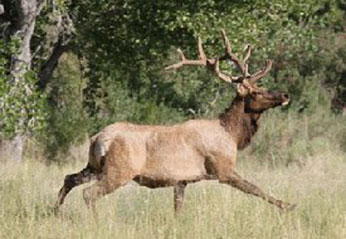Natural History

There are three elk species in California: Tule, Roosevelt, and Rocky Mountain. Tule elk are endemic to California. Explore the natural history of Tule elk.
Viewing Opportunities
The Owens Valley has 5 distinct populations of tule elk. At least one of these populations lends itself to easy access for wildlife viewing. Near Tinemaha, just south of Big Pine on Highway 395, there is a herd of elk that can often be viewed right off the highway. It is a great place to bring binoculars and a camera and take a break from driving when visiting the Owens Valley. See Map for Viewing Locations.
Conservation and Hunting: Complementary Actions
Tule elk were introduced to the Owens Valley in 1933 as part of conservation efforts to save a species that had been reduced to a very small population. Subsequently tule elk thrived in the Owens Valley to the point of overpopulation. Read the story of how tule elk in the Owens Valley have come to be a local wildlife viewing attraction along highway 395 as well as a hunting opportunity for those fortunate enough to get one of the very limited hunting tags offered annually, Tule Elk Introduction to the Owens Valley.
Some of the elk in the Owens Valley wear GPS collars to allow biologists to track and study their movements. The department is currently studying their distribution, abundance, and home range sizes; see the Owens Valley Tule Elk Report (PDF)(opens in new tab) for more information.
Hunting Opportunities
Tule elk have a number of hunts scheduled in the Owens Valley. See Elk Hunting Information